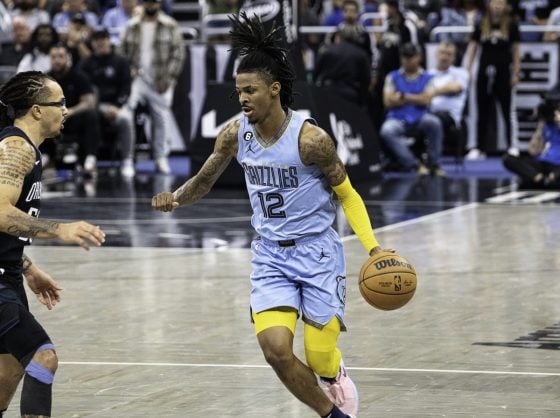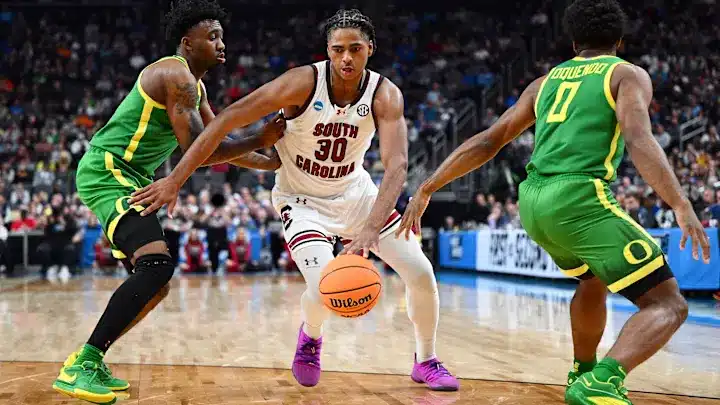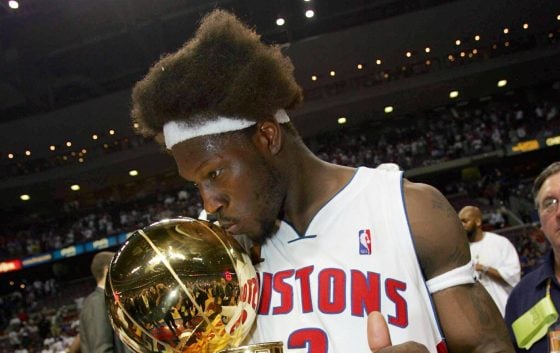Last night, the Celtics faced the Pistons, and the game was far more entertaining than you might have expected. After a dominant start, the Celtics watched their lead evaporate and found themselves trailing in the final minutes. Here are my 10 takeaways from the third game of the season:
1. Derrick White vs. Cade Cunningham at the rim
D-White might be the best guard at rim protection since Dwyane Wade. Time and time again, he’s proven he can perfectly time his jump to meet and block opponents at the rim. Last night, he faced Cade Cunningham multiple times. The 6’6” point guard is tough to stop when he gets close—he’s already posterized Myles Turner this season.
Cade was looking to add to his highlight reel, and D-White was the target. However, White isn’t someone you can posterize without consequences. Maybe Cade got his Kodak moment, but Derrick gave him two in return.
White blocked him from behind in the first quarter, but most importantly, he saved the Celtics with a clutch block in the final minute. Once again, the former Spur delivered when it mattered most. It’s hard to keep track of how often Derrick White has come through at just the right time.
2. Celtics outscore Pistons 18-6 in final four minutes
The Celtics may have lacked consistency, but when it counted, they executed flawlessly. With the starting five on the court, they switched everything on defense, closing down the gaps the Pistons were trying to exploit.
Offensively, they ran their usual sets. First, a pick-and-roll led to a pass to Al Horford on the short roll, collapsing the Pistons’ defense. Horford kicked it out, White swung the ball, and Holiday delivered from the corner.
Next, an early drive-and-kick from Jaylen Brown opened up another three-pointer for Jrue Holiday.
Then, they put their trust in Jayson Tatum’s post-up game. First, Horford set a down screen, giving Tatum deep post-up position and he capitalized in the post and made the Pistons pay, drawing free throws and then hitting the game-winner.
3. 42-point first quarter
At the start of the game, the Celtics once again showed their seriousness about the regular season. Like against the Knicks, they had an impressive first quarter where everything clicked. They created offense through drives and ball movement, making more threes and assists in the first quarter than in the second.
It’s a great sign when the Celtics execute the game plan right from the start. It increases the chance of resting their stars in the fourth quarter. Unfortunately, they couldn’t sustain that momentum, and the game turned into a close one. Execution won’t always be perfect, but it will be interesting to track this trend throughout the season.
4. Jayson Tatum defends the opposing center
Is there anything Tatum can’t do? Last night, Horford or Luke Kornet were tasked with guarding Tobias Harris or Ron Holland, while Tatum defended the opposing center. This gave the Celtics’ defense more flexibility and forced the Pistons to adjust their scheme early in the game.
If the Pistons wanted to target Horford or Kornet, they had to use Harris as a screener instead of Jalen Duren. This made Duren less impactful and pushed Harris into isolation.
This defensive wrinkle forced the Pistons to adapt, something that’s challenging for a young team with a new coach. Nevertheless, they made the Celtics work hard with their speed.
5. Pistons find access to the Celtics’ rim
Last season, the Celtics were one of the best teams at limiting rim attempts and efficiency. But last night, the Pistons generated 28 shots at the rim, converting 21 of them at a 75% clip—well above what Boston usually allows.
How did they do it? Pace and space.
6. Transition defense issues for the Celtics?
Throughout the game, the Pistons got a shot attempt on 100% of their steals, which means the Celtics’ defense struggled to keep up with Detroit’s speed after turnovers. While this might seem trivial, transition defense was one of Boston’s keys to success last season.
Last night, however, they were beaten by the Pistons’ fast breaks, often allowing open runs to the rim early in the shot clock.
7. Should the Celtics abandon drop coverage?
Transition defense wasn’t the only issue. The Pistons, with their skilled ball handlers, exploited Boston’s drop coverage on pick-and-rolls. This coverage works well with Kristaps Porzingis, given his elite length, but the other Celtics centers are better suited to a switch-everything approach.
Drop coverage opened space for the Pistons to attack with speed or pull up for shots—both risky outcomes for the Celtics. However, this might be a way for the coaching staff to “rest” the centers. Switching is physically demanding, and long-term, they may prefer to concede a few points rather than exhaust their big men every game.
8. The lineup that opens the second and fourth quarters needs work
In the first few games, the Celtics opened the 2nd and 4th quarters with Jrue Holiday, Jaylen Brown, Sam Hauser, Xavier Tillman, and Horford. Last night, Joe Mazzulla tweaked it by inserting Payton Pritchard and White in place of Jrue and Sam. The goal of this lineup is to let Jaylen Brown create for himself and hunt mismatches.
However, this lineup has some flaws. First, the spacing. With Tillman not respected beyond the three-point line and similar skill sets between him and Horford, the offense lacks versatility.
:no_upscale()/cdn.vox-cdn.com/uploads/chorus_asset/file/25701265/Line_Up_Spacing_Problem.png)
Defensively, it’s also problematic. Opposing offenses target Pritchard, and switching can create mismatches. Drop coverage doesn’t suit Tillman or Horford either. I’m curious to see how this lineup evolves over the season.
9. Al Horford starts hot, and the Celtics capitalize
Last season, Horford attempted eight or more three-pointers only five times. Last night, he made five of his eight attempts in the first half alone. Sensing his hot hand, the coaching staff called several plays for him.
Pin-down Action into an exit-screen:
Post-up with an exit-screen:
10. Derrick White couldn’t hit a three, so he attacked the rim
White missed all his three-point attempts last night and didn’t score until late in the first half. Instead of forcing threes, he attacked the rim in the second half. He used his speed and off-ball movement to exploit the Pistons’ defense, driving early in possessions when he had the ball.
When he didn’t, he still found ways to be a threat. He cut perfectly alongside the pick-and-roll and, like in the Finals, tricked the defense by staying in the dunker spot to provide a deadly option in the inverted pick-and-roll with Brown and Pritchard.






